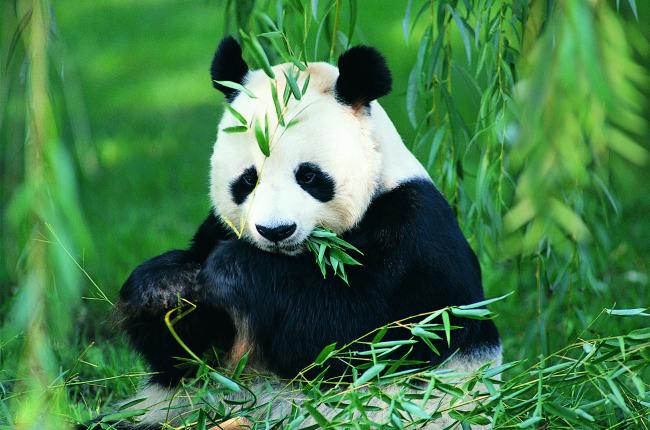The anatomy-related adaptations were those that seemed to control the development of the pandas’ second thumbs.
與生物體結構相關的基因有可能控制熊貓第二拇指的生長。
Two genes in particular, DYNC2H1 and pericentrin, have mutations that cause identical changes in each type of panda in the proteins encoded by these genes.
特別是DYNC2H1和中心粒周圍蛋白這兩種基因的突變,會導致在每種類型的熊貓中,由這兩種基因控制編碼的蛋白質產生相同變化。
In mice, mutations in these genes are known to encourage extra digits to grow, so it is not unreasonable to suspect that they are also the cause of this in pandas.
在小鼠中,這些基因的突變可導致小鼠額外足趾的生長,所以有理由認為熊貓第二拇指生長的原因也是基因突變。
The appetite-modifying change involved one of the disabled genes.
食欲修飾基因的改變是喪失功能的基因中的一個。

When working, this gene encodes a protein which forms part of the tongue’s taste buds for umami, a savoury “meatiness” separate from the other four tastes of sweetness, sourness, bitterness and saltiness.
該基因在工作時,會編碼一種組成舌頭味蕾中鮮味的蛋白質,是區別于酸甜苦咸四種味道的可口的“肉味”。
Umami perception is stimulatedby glutamicacid, one of the 20 amino acids that make up proteins—but one that is more characteristic of animal proteins than plant ones.
鮮味感覺是由谷氨酸激發的產生的,它是組成蛋白質的20個氨基酸之一,但相比于植物蛋白,它更具有動物蛋白的特性。
Sensitivity to umami is valuable to a carnivore but unnecessary (and possibly harmful) to a herbivore.
對鮮味的敏感程度對食肉動物而言非常重要,但對食草動物來說,這是不必要并且可能是有害的。
The other genetic convergences Dr Hu recorded were related to the digestion and metabolism of substances scarce in, or absent from, bamboo.
胡博士記錄的其他遺傳轉化與竹子中缺乏或缺失的物質的消化和代謝有關。












